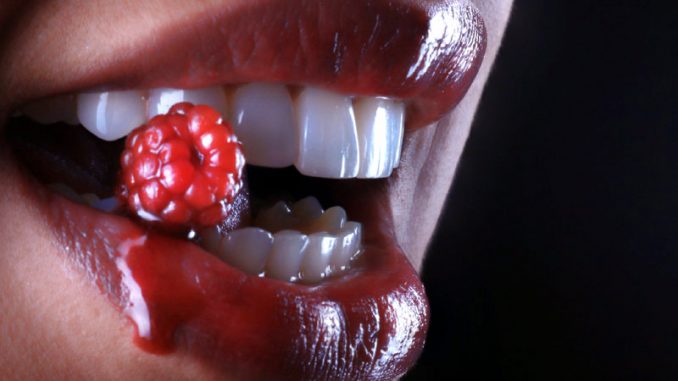
Throughout our lives, we are surrounded by billions of microorganisms that normally don’t create any problems for us. Our immune system is designed and “trained” to deal with them. In a human body with a normally running immune system, the good, the bad bacteria, and fungi live in a constant and perfect balance.
However, any deviation from the normal functioning of our immune system can break this balance and cause an overgrowth of certain bacteria or fungi. In these cases, they can create real problems that are usually referred to as bacterial or fungal infections. A typical occurrence of such a phenomenon is the overgrowth of the fungi Candida Albicans causing infections called candidiasis.
In normal circumstances and at appropriate levels, Candida Albicans can even support digestion and assist the absorption of nutrients in the body. However, when its population grows too much and no measures are taken, the fungus breaks down the walls of the oral, intestinal, or vaginal mucosa, and penetrates the bloodstream, which may cause severe health problems.
What is Candida?
Candida Albicans is a fungus that normally lives on the skin, in the mouth, and intestines of any healthy human without causing problems.
However, in the presence of certain predisposing factors such as weakened immunity or imbalance of the normal flora of the body, overgrowth of Candida Albicans occurs, which leads to infections called candidiasis.
What infections can be caused by Candida?
Oral candidiasis, or oral thrush
Oral candidiasis is most often observed in newborn babies, and the infection is transmitted through the birth canal when the mom is affected by genital candidiasis.
The signs to look out for in the baby are white, raised areas in its mouth. They are most common on the tongue and the inside of the cheeks, although they can appear on the gums, on the tip of the mouth, on the tonsils, or along the throat. When pulling out these white spots, they leave red areas that may even slightly bleed. In very severe cases, babies may even have problems eating or drinking.
Oral candidiasis can also occur in adults and sometimes babies affected by oral thrush can transmit the infection to their moms through breastfeeding and other contacts.
Other symptoms of oral thrush may include bad taste in the mouth or bad breath, redness of the mouth and throat, soreness, burning sensation, or cracks in the corner of the mouth.
It also develops in adults taking antibiotics or corticosteroids, undergoing immunosuppressive therapy, or having diabetes, anemia, blood diseases, leukemia, or other forms of malignancies. In other words, oral candidiasis occurs when the immune reactions of the body are for some reason weakened or missing.
Genital candidiasis, or vaginal thrush
Genital candidiasis in pregnant women often occurs as a result of the usually elevated hormone levels, which is considered normal during pregnancy. Other cases in which genital candidiasis may develop are either poor or excessive hygiene, both leading to an imbalance in the vaginal flora.
Sometimes the excessive use of inappropriate means of intimate hygiene may disrupt the balance in the vaginal flora and also provoke candidiasis.
Common symptoms are redness in the intimate area, itching, and burning when urinating, and a discharge with an unpleasant odor and unusual consistency, similar to skim milk. Sometimes, this is the first visible sign of the infection.
Invasive candidiasis
The factors that determine the development of invasive candidiasis are different from those of the previous two infections.
The main factors here are surgical operations, in particular abdominal ones. An extra contributing factor to invasive candidiasis may be the overload of the body with antibiotics after such surgical procedures.
Since Candida is found in abundance in the intestines, the possibility of Candida spreading to neighboring tissues and organs during abdominal surgical interventions is high. The risk may be increased by the presence of a possibly contaminated surgical instrument, or infection can be introduced through the patient’s skin by a catheter.
The most commonly affected organs may be the liver, kidneys, spleen, heart, and lungs. This candidiasis can sometimes be fatal if measures are not taken in time.
The overuse of antibiotics can also be a contributing factor to invasive candidiasis. As we know, bacteria and fungi are normally competing with each other for “living space”. Since antibiotics tend to mainly eliminate bacteria, fungi (and more precisely Candida) seize the opportunity to naturally overgrow in the space freed by the bacteria eliminated by the antibiotics.
Eczema
You will probably be surprised to learn that one of the most widespread skin irritations – Eczema – can also be caused by Candida.
Eczema can be caused by a variety of viruses, bacteria, and fungi, including the Staphylococcus aureus bacteria and the Herpes simplex virus. However, Eczema can also be caused by the Candida Albicans fungi.
Experts suggest that Eczema caused by Candida Albicans, also referred to as atopic dermatitis, is not even a skin condition. It is a rather gastrointestinal problem, as it is caused by Candida overgrowth in the guts. In these cases, the skin irritations are a detox mechanism and a reaction to pathogenic processes occurring in the guts.
How are Candida infections treated and how can Kefir help?
For most types of candidiasis, medical doctors usually recommend taking probiotics because they contain Lactobacilli, which promote the normal balance of the vaginal and intestinal microbiome. The Lactobacilli also absorb the excess glycogen that the Candida colonies usually feed on.
Moreover, most types of candidiasis are a result of a disrupted balance in the microbiome of the mouth and intestines, and restoring this balance is amongst the most prominent powers of probiotics, Kefir included.
Very often the different types of candidiasis are treated with antifungal medical drugs like Nystatin or Clotrimazole. These medicines are usually very effective, but their biggest drawback is that they fully eliminate specific types of fungi. The problem is that the space freed by the destroyed fungi will then easily be occupied by other types of microorganisms like bacteria or other types of fungi that may not be affected by the drugs.
In other words, by eradicating one type of fungal overgrowth, antifungal drugs may create favorable conditions for the development of other overgrowths, usually bacterial ones.
As we already said, antibiotics have a similar drawback, which is also one of the root causes of candidiasis. Antibiotics eliminate the bacteria thus creating favorable conditions for fungal overgrowths. They can destroy specific harmful bacteria, but the space freed by these bacteria gets usually occupied by other microorganisms unaffected by antibiotics, especially fungi like Candida.
That is why probiotics and Kefir, in particular, have a more pronounced and lasting effect on the treatment of Candida infections. Instead of exterminating the Candida fungi, probiotics tend to naturally restore the bacterial and fungal balance in the body, thus eliminating the root cause of Candidiasis – the bacterial and fungal disbalance.
However, as we know, Kefir also contains fungi and yeast, including some Candida strains. So, the question that comes naturally is: how a fungal infection can be treated by introducing more fungi into the body?
And here comes the key point! The final purpose of the treatment of Candida infections is not the extermination of Candida itself, but the elimination of the bacterial disbalance and the restoration of the right bacterial and fungal balance in the body.
Candida itself is not a harmful microorganism. What makes it dangerous is its overgrowth, and Kefir can definitely help in the elimination of this overgrowth by restoring the right bacterial and fungal balance in the body.
Summary
Under normal circumstances, Candida Albicans is a harmless fungus that can be found in any human body. What may make it dangerous is its overgrowth which may happen when our immune system is somehow compromised and the balance between the good, the bad bacteria, and the fungi in our bodies is disrupted.
This may happen after treatments with antibiotics, and corticosteroids, as well as upon immunosuppressive therapy, in cases of diabetes, anemia, and some blood diseases, leukemia, or other forms of malignancies. This balance can be also disrupted during pregnancy due to increased levels of female hormones.
The infections caused by the overgrowth of Candida albicans are called candidiasis.
There are three main types of candidiasis:
- Oral candidiasis, or oral thrush, when the infection is in the oral cavity.
- Genital candidiasis, or vaginal thrush, is when the infection is located in women’s genital organs.
- Invasive candidiasis can happen if Candida albicans, normally residing in the intestine, finds their way through the intestine walls to the bloodstream and infects the liver, kidneys, spleen, heart, or lungs. In this case, invasive candidiasis occurs as a complication after abdominal surgery.
The common skin condition known as eczema can sometimes also be caused by an overgrowth of Candida albicans. However, this time the overgrowth is not located in the skin itself, but the skin irritation (eczema) is a detox reaction resulting from a Candida overgrowth in the guts.
In most cases, candidiasis is treated with the help of probiotics, because of their ability to restore the bacterial and fungal balance in the human body.
In extreme cases, candidiasis can be treated with antifungal medicines but such treatment is recommended only if the intake of probiotics was found ineffective. The downside of treatments of candidiasis with antifungal medications is that they can create favorable conditions for an overgrowth of other microorganisms that normally compete with Candida.
Related resources
- Kefir pros and cons
- Can Kefir help with high blood pressure?
- Can Kefir help with acid reflux?
- Can Kefir help with SIBO treatment?
- Is Kefir good for osteoporosis?
- Can Kefir help with IBS?
- Can Kefir help with antibiotics?
- Is Kefir safe during pregnancy?
- Is Kefir safe while breastfeeding?
- Can Kefir help with diabetes?
- Can Kefir help with weight loss?



